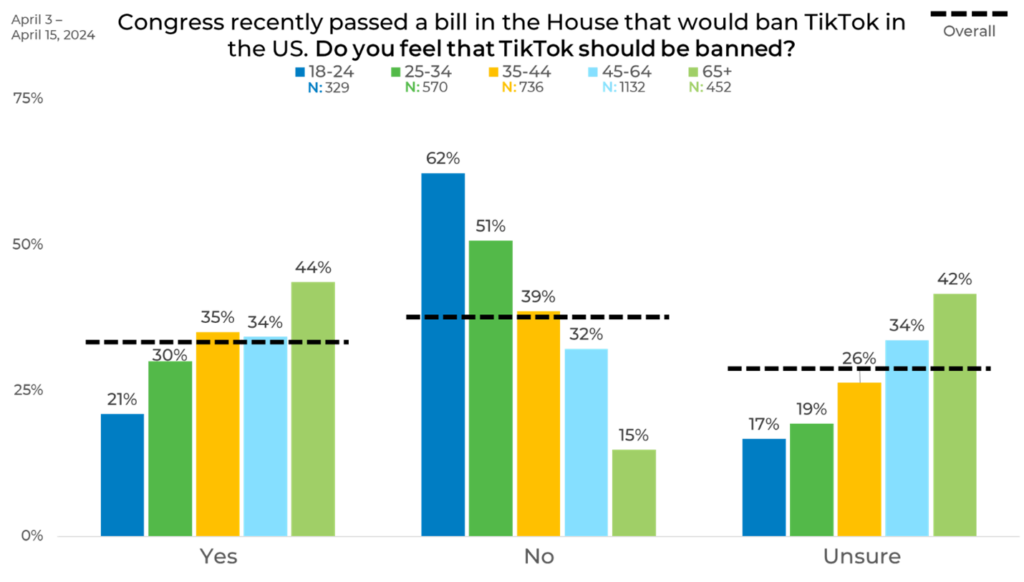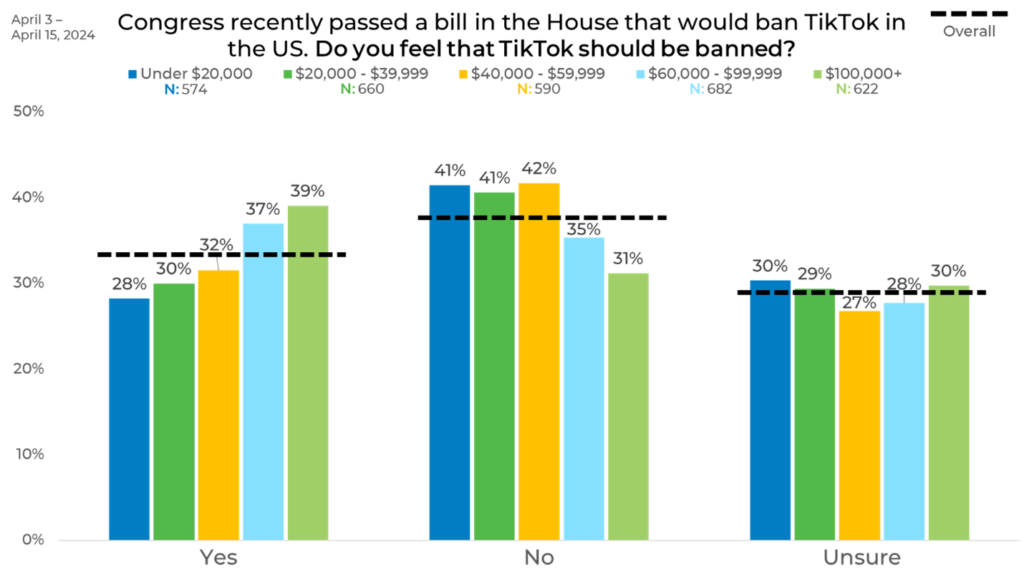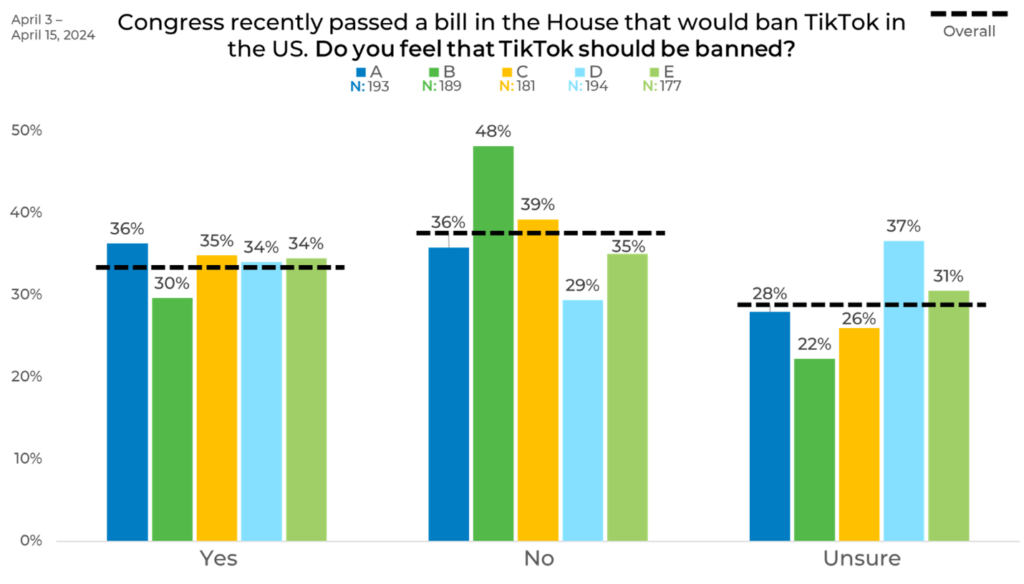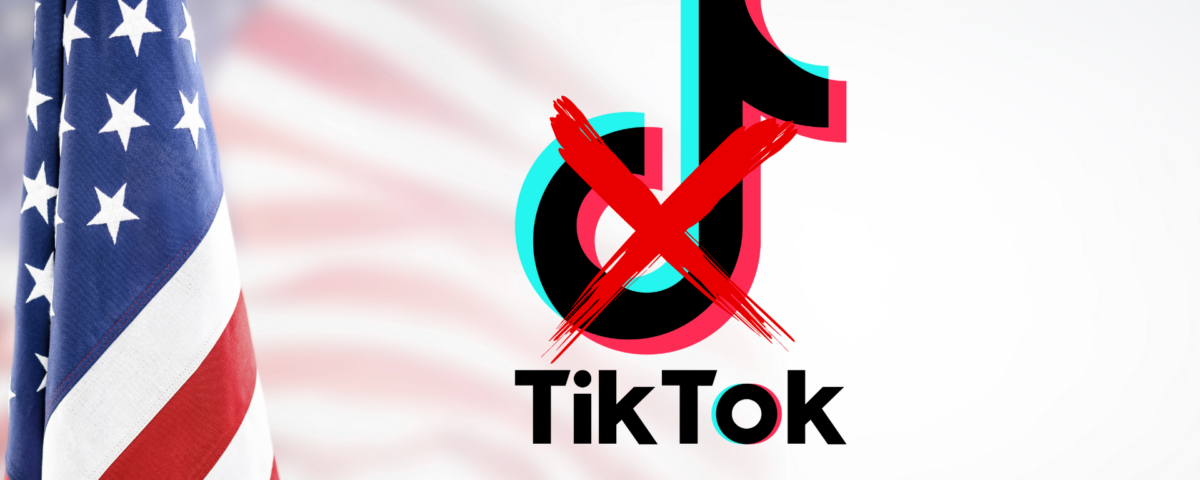
Evolution in the Market Research Industry with Alex Hunt of Behaviorally
April 23, 2024
An IIeX 2024 Recap with Tony Brown and Jason Inderhees
April 26, 2024As of April 24, 2024, the United States TikTok ban is one step closer to becoming a reality, with recently passed legislation stating that TikTok’s CEO has nine months to arrange to sell the company, with the potential for an additional three-month grace period.
Americans have been quick to flood the internet with opinions across the spectrum. In our recent round of research-on-research. we people how they are feeling about the potential for a TikTok ban. Here’s what they said:
Overall

The results reveal a complex outcome of public opinion regarding the proposed TikTok ban in the US.
Notably, those opposing the ban slightly outnumber those in favor, with 38% against and 33% for the ban. This slight edge suggests that while there is substantial concern about TikTok, a larger segment of the population either sees the benefits of the platform or questions the efficacy or fairness of a ban.
In the same breath however, the high percentage of respondents, 29%, who are unsure about the ban, underscores a significant level of indecision or lack of information among the public.
The close split in opinion and the considerable uncertainty reflects the complexity of this issue, highlighting a challenging decision-making landscape for policymakers.
Age

The breakdown of opinions on the TikTok ban across different age groups highlights the most significant variations, with a clear trend showing increasing support for the ban as age increases. The youngest age group (18-24) shows the least support for the ban at just 21%, while those aged 65 and over are most in favor, at 44%.
Conversely, opposition to the ban is overwhelmingly strong among the youngest voters, with 62% against the ban, and dramatically declines with age, falling to just 15% among those 65 and over, a decrease in support of 47%.
The percentage of respondents who are unsure about the ban also increases with age, from 17% in the youngest group to 42% in the oldest. This rising uncertainty might reflect a growing complexity in how different generations perceive the risks and benefits of social media platforms and how they view the concept of government censorship.
Political Affiliation

The political breakdown on the issue of banning TikTok in the US showcases clear partisan differences.
Republicans are the most supportive of the ban, with 44% in favor, potentially suggesting a stronger preference within this group for measures that might address national security or data privacy concerns associated with the app. Democrats and Independents show less support for the ban, at 30% and 31% respectively, indicating a more moderate stance on the issue.
Opposition to the ban is strongest among the 'Other' political group, at 47%. Democrats and Independents hover in the middle, with 40% and 38% respectively opposing the ban %, and least strong among Republicans, at 32%.
Income

Income seems to have a similar support trend that we saw with different age groups. Similar to how we observed support for the ban increased with age, support also increases as income rises. It starts at 28% for those earning under $20,000 and climbs to 39% among individuals making $100,000 or more.
In contrast, opposition to the ban remains relatively stable among lower—to middle-income earners, with around 41% against the ban among those earning less than $60,000 before tapering down to 31% among the highest earners. This indicates that lower—and middle-income individuals may be more inclined to value the benefits over risks. Uncertainty about the ban shows little variation across income brackets, hovering around 30%, with discrepancies of only 3% across the board.
Panel

Breaking the results down by panel uncovers some interesting trends. Panel A shows a relatively balanced distribution between those who support the ban and those who oppose it, each with a "Yes" response of 36%. In the other panels, however, there are more dispersed responses of support or opposition, showing not how truly divisive this issue is but how the attitudes and behaviors of panels can also come into play.
The discrepancies between the different panels above show the importance of ensuring that when gathering data, an emphasis is placed on strategically blending sample sources to balance demographics as well as behaviors and attitudes.
Download The Sample Landscape: 2024 Edition to better understand how panels differ from one another and how they impact your data.



